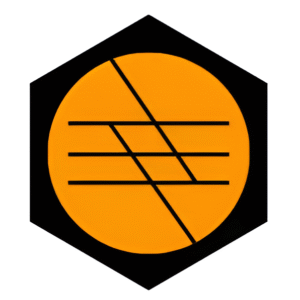Picture this: you’re sending money to a friend in another country, but instead of waiting days for a bank to process the transaction and charge hefty fees, the transfer happens in minutes with minimal cost. No middleman, no bureaucracy, just pure digital efficiency. This isn’t science fiction – it’s the reality that blockchain technology is creating today.
What Exactly Is Blockchain Technology?
Think of blockchain as a digital ledger, but not just any ordinary ledger. Imagine a notebook that’s copied thousands of times across a network of computers, where every page is linked to the previous one, and once something is written, it can never be erased or altered without everyone knowing. That’s essentially what blockchain does with digital information.
At its core, blockchain is a distributed database that maintains a continuously growing list of records, called blocks, which are linked and secured using cryptography. Each block contains a cryptographic hash of the previous block, a timestamp, and transaction data. This creates an immutable chain of information that’s virtually impossible to hack or manipulate.
How Does Blockchain Actually Work?
The Building Blocks of Trust
When someone initiates a transaction on a blockchain network, it doesn’t immediately get added to the ledger. Instead, it enters a pool of pending transactions. Here’s where it gets interesting: network participants, called nodes, compete to validate these transactions through complex mathematical problems.
Once a transaction is verified, it gets bundled with other transactions into a block. This block then needs approval from the majority of the network before it’s added to the chain. It’s like having thousands of accountants independently verify every entry before it’s permanently recorded.
The Power of Decentralization
What makes blockchain revolutionary is that there’s no central authority controlling it. Traditional systems rely on banks, governments, or corporations to maintain records and verify transactions. Blockchain eliminates these middlemen by distributing trust across the entire network.
The Different Types of Blockchain Networks
Public Blockchains: Open to Everyone
Bitcoin and Ethereum are perfect examples of public blockchains. Anyone can join, participate in transactions, and help maintain the network. These are completely decentralized and offer the highest level of security and transparency.
Private Blockchains: Exclusive Access
These are restricted networks where only specific organizations or individuals can participate. Think of them as private clubs with blockchain benefits – faster transactions and lower costs, but with limited access.
Hybrid Blockchains: Best of Both Worlds
These combine elements of both public and private blockchains, allowing organizations to control access while still benefiting from blockchain’s security and transparency features.
Real-World Applications Beyond Cryptocurrency
Supply Chain Revolution
Ever wondered if that organic coffee you’re drinking is actually organic? Blockchain can track products from origin to consumer, creating an unbreakable chain of custody. Walmart uses blockchain to trace food products, reducing the time needed to track contamination sources from weeks to seconds.
Healthcare Data Management
Medical records on blockchain can give patients control over their health data while ensuring it’s secure and accessible to authorized healthcare providers instantly. No more lost files or delayed treatments due to missing medical history.
Smart Contracts: Automation at Its Finest
Imagine contracts that execute themselves when conditions are met. Smart contracts on blockchain platforms like Ethereum do exactly this. Insurance claims could be processed automatically, property transfers could happen instantly, and business agreements could execute without human intervention.
Digital Identity Protection
With blockchain, you could own and control your digital identity completely. No more worrying about data breaches at social media companies or having your personal information sold to advertisers without your consent.
The Challenges We Can’t Ignore
Energy Consumption Concerns
Bitcoin’s blockchain network consumes more electricity than some entire countries. This environmental impact has sparked debates about sustainability and led to the development of more energy-efficient consensus mechanisms.
Scalability Issues
Current blockchain networks can handle far fewer transactions per second compared to traditional payment systems. While Visa processes thousands of transactions per second, Bitcoin manages only about seven.
Regulatory Uncertainty
Governments worldwide are still figuring out how to regulate blockchain and cryptocurrencies. This uncertainty creates challenges for businesses wanting to adopt blockchain solutions.
Technical Barriers
Let’s be honest – blockchain technology isn’t user-friendly for the average person yet. Complex wallet addresses, private keys, and technical jargon create barriers to mainstream adoption.
What Does the Future Hold?
The blockchain revolution is just beginning. We’re seeing developments in areas like decentralized finance (DeFi), where traditional financial services are being rebuilt on blockchain platforms. Non-fungible tokens (NFTs) are creating new ways to own and trade digital assets. Central bank digital currencies (CBDCs) are being explored by governments worldwide.
Interoperability between different blockchain networks is improving, which could solve many current limitations. Layer-2 solutions are addressing scalability issues, making blockchain networks faster and more efficient.
The Bottom Line
Blockchain technology represents a fundamental shift in how we think about trust, ownership, and value transfer in the digital age. While it’s not a magic solution to every problem, it offers compelling advantages for situations where transparency, security, and decentralization matter.
Whether you’re a business owner exploring new opportunities, an investor considering cryptocurrency, or simply someone curious about technology’s future, understanding blockchain is becoming increasingly important. We’re not just witnessing a technological evolution – we’re participating in a digital revolution that could reshape how society operates.
The question isn’t whether blockchain will impact your life, but rather how quickly you’ll adapt to the changes it brings. The future is being built on blockchain, one block at a time.



